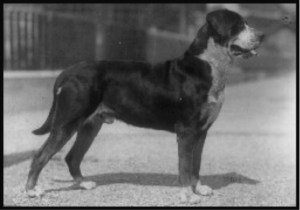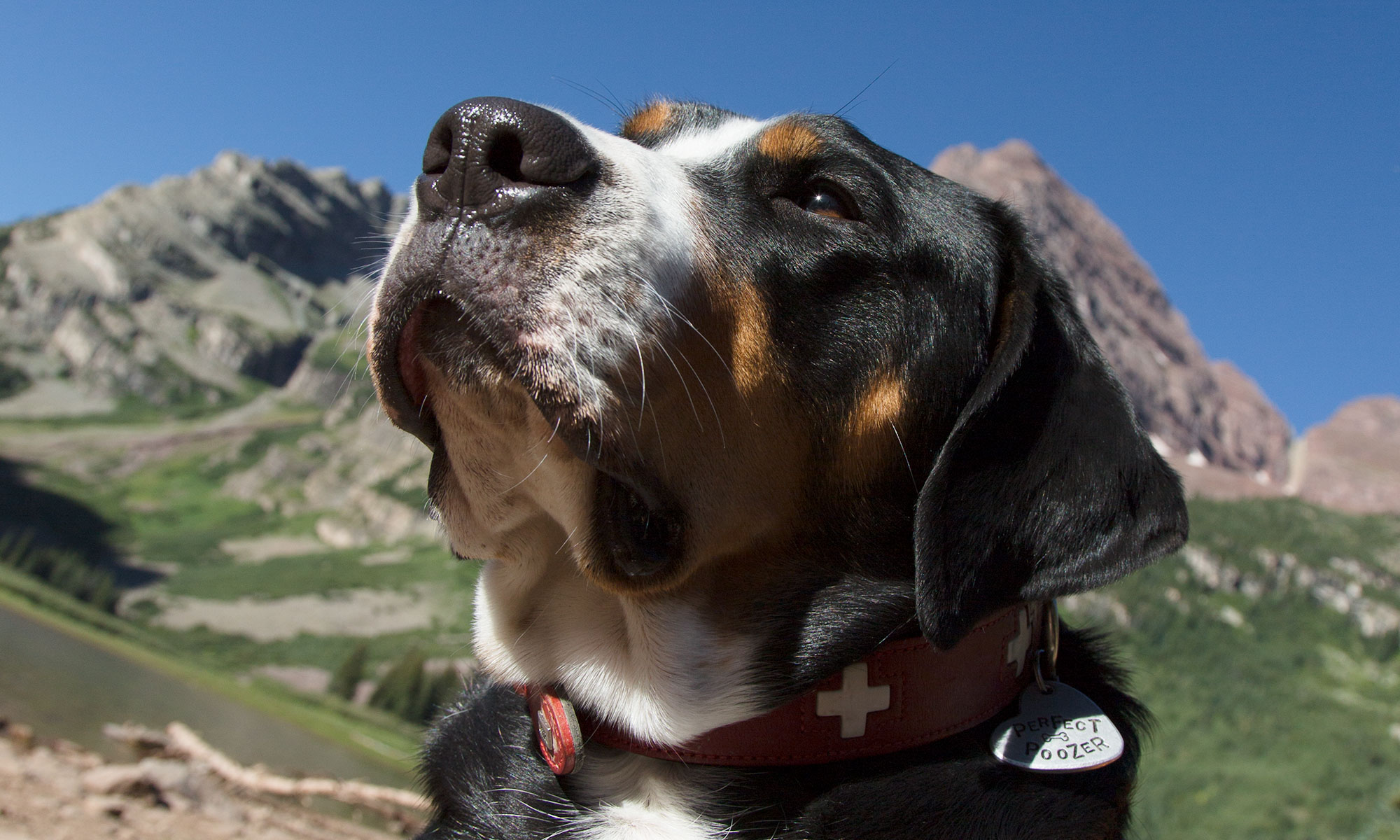The article which follows presents a commonly regarded history of the Greater Swiss Mountain Dog, and includes some anecdotal tales. Source: unknown.
*****
The Greater Swiss Mountain Dog comes to us from the farms and villages of the Swiss Alps. He is the largest (and probably the oldest) of the four Sennenhund breeds (including the Appenzell Cattle Dog, Entlebuch Cattle Dog and the AKC-recognized Bernese Mountain Dog). The Sennenhund breeds are thought to be descendants of the Roman Mastiffs, brought to the area more than 2000 years ago, and though the four breeds are different sizes, they share the same markings.
The Greater Swiss Mountain Dog’s natural drafting ability led to his nickname, “the poor man’s horse”. He was also referred to as “Old Blaze”. GSMD’s may have contributed to the development of the St. Bernard, and in the mid 1800’s, when the St. Bernard became popular, the GSMD lost favor and almost became extinct. Only a few remained on isolated farms.
Right after the turn of the century, a gentleman by the name of Franz Schertenleib found one and bought it as a “white elephant”. He was eager to hear what the knowledgeable authority of the Sennenhund breeds, Dr. Albert Heim, had to say about his find and exhibited the dog at a 1908 show that Dr. Heim was judging. Heim, having thought the breed extinct, praised the dog and encouraged Swiss dog lovers to scout the farms and find enough animals to begin breeding programs. Response was enthusiastic and the breed was reestablished. In 1910, the renewed interest by those breeders led to the GSMD’s being accepted by the Swiss registry. The GSMD is still fairly rare, even in Switzerland, however, the breed is now fully recognized by the AKC.
Arno v. Fryberg S.H.S.B. 29413 Born 1929
Sire: Bello v. Steinberg #22935 Born 1926 — Dam: Lina v. Sandgrube #14401 Born 1923

The first Greater Swiss Mountain Dogs were imported to the United States in 1967 (there is information that J. Frederick and Patricia Hoffman first saw the dogs at a show in Frankfurt, Germany and imported Kastor von Fryberg and Diana von Urtenenburg who whelped the first litter of 3 males and 3 females in 1970). In 1985, they were accepted into the AKC Miscellaneous Group. They are now part of the Working Group.
They are an attractive, easily groomed show dog with an aptitude for competitive obedience. Their other talents include tracking, watchdog, guarding, drafting and carting. They are not roamers and hate to be tied or confined. They are happiest with their families, and they love to pull carts or sleds, especially if the passengers are children. They are protective, but not aggressive.
Their natural protective instinct is demonstrated by the tale of “Nero”, who, after spending an evening in the pubs with his owner and some of his owner’s friends, chose to accompany one of those friends, who was “in his cups”, home. When the man fell in a creek, Nero pulled him out, followed him home, and spent the night with him. When the fellow awoke the next morning and opened the door, Nero left and immediately headed for home. Today, this instinct is channeled into various kinds of training, not the least of which is as a watchdog for homes.
Save
Save
Save
